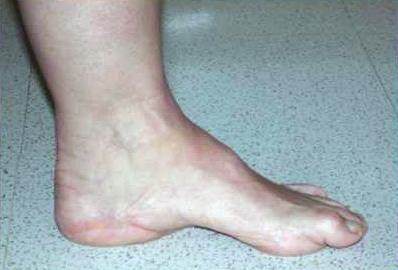Cavus Foot
A cavus foot has a high arch. The cavus can range from being slightly high to severely deformed, causing you to walk on the outside of your foot. Surgery sometimes is needed to realign the foot.
While the cause of a high-arched foot it often unknown, a cavus could be caused by nerve disease, clubfoot, or injury. Treatment ranges from changes in shoes to surgeries, depending on the amount of deformity and related problems.
The main goals of cavus foot surgery are to reduce pain, improve function, and prevent further damage or injuries.
Diagnosis
Your foot and ankle orthopedic surgeon may recommend surgery if there is no relief with physical therapy, orthotics, changes in shoes, and/or changes in activity. Some patients also will experience tendon problems, ankle weakness, and foot fractures. These patients may require other procedures to address related problems.
If you have medical problems that make surgery unsafe such as any infections or blood vessel disease, cavus foot surgery may not be appropriate.

A patient with cavus foot.
Treatment
The surgical procedures involved with the correction of the cavus foot are varied and depend on the patient’s foot and ankle alignment and related problems. Typically, the foot is realigned by cutting and repositioning the bones (known as osteotomies). Repairing fractures, tightening ligaments, and transferring tendons also may be necessary. The goal is for the repaired foot to evenly distribute weight along both inside and outside edges. A variety of incisions may be needed to perform the procedures related to the correction of the cavus foot.
Specific Techniques
- Soft-tissue surgery: Cavus foot is caused in part by an over-pull of one of the lateral ankle muscles. A release of this tendon can be performed on the outside of the ankle. Additionally, a transfer of this tendon can be performed to help correct the deformity of the ankle joint. Often patients will have a tightness of their gastrocnemius muscle, one of the main muscles in the calf. This can increase the deformity or prevent a correction from working. It is addressed with a lengthening of a part of the calf muscle or Achilles tendon. This is often performed through one or more small cuts in the back of the leg/ankle. Finally, the plantar fascia may be tight. The plantar fascia is a cord-like structure that runs from the heel to the front part of the foot. Your surgeon may perform a partial or complete plantar fascia release.
- Dorsiflexion osteotomy of the first metatarsal: This procedure flattens out the arch.
- Calcaneal (heel bone) osteotomy: This procedure is performed to bring the heel bone back under the leg. This is needed if correcting the deformity in the front of the foot does not also correct the back of the foot or ankle. A calcaneal osteotomy can be performed several ways and often is held in place with one or more screws.
- Tendon transfers: Too much pull of certain muscles and tendons often is the cause of the deformity associated with a cavus foot. Moving one of these muscles or tendons may help the foot work better. In addition, patients with a cavus foot may have weakness moving the foot up, which is sometimes called a foot drop. In these cases, a tendon from the back of the ankle may be moved to the top of the foot to help improve strength.
- Bony surgery: Correcting the deformity of the foot may not be possible with soft tissue procedures alone. In these instances, one or more bone cuts (osteotomies) may be needed. Instead of a bone cut, your surgeon may perform a fusion (arthrodesis) procedure. A fusion removes the joint between two bones so they grow together over time. During a fusion the bones may be held in place with plates or screws.
- Joint fusion: Sometimes patients have a deformity that has caused damage to the joints. In these cases, soft tissue procedures or bone cuts may not be enough, and it may be necessary to eliminate the motion of the joint.
- Toe surgery: Clawed toes are a common problem in patients with cavus foot deformity. This can be treated with tendon surgery, fusion, or removal of part of the toe bones. Following surgery the toes may temporarily be held in place with pins.
Recovery
Recovery typically requires at least six weeks of non-weight bearing so the bones and other structures can heal. In many cases, an even longer period of protection or non-weight bearing is needed. Typically, the final results are not seen for approximately 6-12 months after surgery.
Risks and Complications
All surgeries come with possible complications, including the risks associated with anesthesia, infection, damage to nerves and blood vessels, and bleeding or blood clots. Particular complications associated with cavus foot surgery include incomplete correction of deformity, return of deformity, and incomplete healing of the bone.
FAQs
If I have cavus foot surgery, will my foot be totally normal?
Foot surgery is difficult, especially when large amounts of correction are needed. The ability to bring the foot into a new position may not be lasting, even if everything looks perfect in the operating room. The goal is to provide improved position and function of the foot and ankle. In some patients with very severe deformity, the goal is a foot that functions well in a brace.
